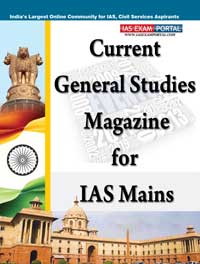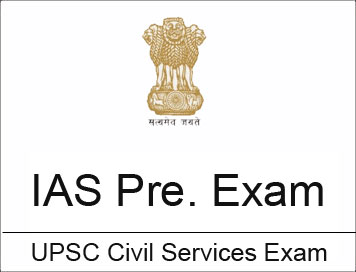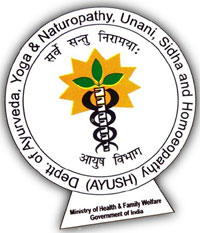
Current General Studies Magazine (April 2017)
General Studies - II "International Relations based
Article" (China: an insight and the state of bilateral relations)
China has been in the news for many years now. This is understandable. China is now the second largest economy in the world and perhaps already the largest trading nation in the world. It has in place an ambitious and extensive defence modernization programme coupled with an economic and technological modernization programme that is intended to transport it into the world’s leading power. The problem is that while China’s growth and ambitions are known, the manner in which it intends to use its new power remains problematic.
It will surprise you to hear from me that, to my mind China has so far by and large been a status-quo power. It was fortunate to have inherited a permanent seat on the UN Security Council and used the Cold War in a skillful manner to convert obvious weaknesses into strengths. It has intelligently used the processes of international economic inter-independence to develop its economy and obtain access to high-end dual use technologies almost without restriction till recent years. It is also a fact that despite being the world’s largest democracy, India was denied access to high level technologies in the guise of dual use technology restrictions since 1974. But a Communist totalitarian regime did not face any such barrier. The double irony is that China has depended enormously for its development on external support especially from the west including Japan. Yet, today it is these very countries which see China as their biggest threat if not competitor on the international arena.
China is ruled by the Communist Party but it is not a Communist State. The objective of the Chinese regime is to set up a system that is overwhelming governed by Chinese characteristics. Hence, for example the concepts of "socialism with Chinese characteristics” and "democracy with Chinese characteristics.” The over-riding objective of the Communist Party of China is to retain power. In sustaining this objective, it faces many obstacles; obstacles that have arisen out of the economic success that China has achieved; obstacles that have arisen because of growing outside influences on China. The latter is important to bear in mind since China’s economic successes have depended enormously on opening out to the outside world. This dependence on the world is even larger today than before. This fact is recognized by the Chinese leadership.
The major part of the problem within China arises from the desire of people who have achieved economic prosperity to aspire for and acquire spiritual, religious and political freedom. The challenge before the Communist Party of China is to ensure that such freedoms can be provided without necessarily breaking the iron hold of the Communist Party on the governance of China. If China does indeed succeed in this effort, the Communist Party would have achieved success in establishing a Chinese model of political governance that has not yet been replicated in the modern world.
The Chinese system is characterized by another dichotomy. Let me explain this. The dominant force in China is the Communist Party and it is the constitution of the Communist Party of China that is supreme. But, China also has a State constitution and State laws. Maintaining consistency between a State system and the supremacy of the Party may have been relatively simple in the past but ever since the impact of the Four Modernizations Programme has progressively kicked in since 1978, the contradictions between the two have grown. Further, as China has integrated more and more with the world, it has put in place laws, rules and regulations which apply not only to their own citizens but also to the outside world; to foreign companies, foreign nationals, etc.
Another facet in which the contradictions have come to the fore is in respect of the Chinese armed forces, broadly defined as the PLA. The PLA functions under the absolute control of the Party. The effort in recent years has been to tighten this control. The PLA is seen as the ultimate guarantor of the Party’s supremacy. The contradiction between the Chinese system and that followed in most other countries especially democracies where the armed forces are answerable to the civilian government is quite stark. As the PLA modernizes and is reorganized to meet the requirements of modern technological warfare, the ability of the Party to maintain absolute control on the armed forces may weaken. Alternatively, the fighting capacities of the PLA could get impaired.
Before I proceed, I should explain how the Chinese system has succeeded in making China the second most powerful economy in the world today. This has been the result of a single-minded focus on development in the belief that if the people can be offered economic prosperity, their desire to seek political freedom can be kept under serious check. Deng Xiaoping brought back the Four Modernizations Programme in 1978 after the excesses of the Cultural Revolution had left China in a difficult and precarious economic situation. Please recall, however, that in spite of the Cultural Revolution, the then Chinese leadership, lead by Mao Zedong, had made peace with the United States and begun to collaborate with that country to constrain the then Soviet Union which was considered the greater threat at that point in time to China. It is yet another irony that today China and Russia are strategic partners and the United States and China potential adversaries. But then, that is the business of international relations and power balances!
The Four Modernizations was the policy to ensure the modernization of agriculture, industry, science and technology and defence. This was not a new plan but a revival of Zhou Enlai’s plan of 1963. The difference is that following the Cultural Revolution and its disastrous outcome for China, Deng Xiaoping who emerged as the supreme leader and had learnt serious lessons from Mao’s disastrous campaigns decided that the time had come to put China’s development on an assured and firm footing. This did not, however, mean that he wanted the Communist Party to lose power.
The process of implementing the Four Modernizations coupled with the system put in place by Deng Xiaoping to ensure political succession in an organized manner every ten years, along with the opening of the Chinese economy to the world and access to science and technology from outside is what has brought China to where it is today.
The Four Modernizations has been implemented in a sequential manner. As the economy grew, the ability to do more in each sector grew with it. As agriculture and industry grew, so did the ability to spend on science and technology and defence grow. Membership of WTO enabled China to integrate itself fully into the international economic system. Indeed, China used its WTO membership to put in place domestic economic reform which may otherwise have faced resistance.
The outcome of the Four Modernizations process has been dramatic across all four areas of focus, be it agriculture, industry, science and technology or defence. Thus, China’s comprehensive national power has grown enormously especially since the beginning of this century. The down side of the economic model that China has followed so far, however, is that appears to have run its course of being able to generate double digit percent growth rates on a sustained basis. That model which was based on infrastructure investment, exports, FDI and technology from abroad could not be sustained beyond a point. The global financial and economic crisis that began in 2008 highlighted this fact. In all fairness however, the Chinese leadership had, since the beginning of this century, begun to make efforts to change the economic paradigm and make it more domestic demand oriented. There has been some success in this latter effort but not enough. Hence, the so called "new normal” in China’s economic growth rate has been reduced from a double digit figure to 6% -7%. With an economy as large as China’s, this still represents a huge absolute increase in GDP every year. But, given the massive requirements of China’s development, for reducing inequalities, for financing urbanization, addressing unemployment, modernizing agriculture, reducing environmental degradation, etc, this may not be adequate. Thus, the challenge to continue to grow at a reasonably rapid growth rate between 6 to 7% will remain a major pre-occupation of the Communist Party of China and the Government of China.
I said earlier that it is the Party that is supreme in China. I also mentioned that Deng Xiaoping had put in place a regular system of leadership change every ten years. The last such change in the top leadership of the Party happened in October 2012 at the 18th Party Congress. It is at that time that time Xi Jinping assumed the leadership of the 5th Generation of the Communist Party of China as General Secretary of the CPC and was subsequently elected as President of China at the National People’s Congress in spring 2013. Let me explain the generational issue. The first generation leadership was lead by Mao Zedong and the second by Deng Xiaoping and thereafter the ten year cycle began with Jiang Zemin taking charge at the head of the third generation leadership. The fourth generation leadership was led by Hu Jintao and Xi Jinping heads the 5th generation. At the 19th Party Congress scheduled for autumn this year, Xi Jinping is expected to receive his second five year term which will take him to 2022. There will be major changes in the Standing Committee of the Politbureau and substantial change in the Politbureau. Xi Jinping will remain at the "core” of the new Central Committee leadership.
It is the Party Congress which lays down the policy priorities for the country over the next five years. The General Secretary of the Party along with the Standing Committee and Politbureau are responsible for implementation of these policies under the supervision of the Central Committee. In view of this, it may interest you to know that the 18th Party Congress had given to Xi Jinping, directions which he has faithfully implemented including the drastic action against corruption and the development of China’s great power ambitions.
Every General Secretary has in recent years coined a focus theme to identify with his respective leadership term. Deng Xiaoping was the father of the Concept of Socialism with Chinese characteristics. This is the foundation of the current Chinese state. For Jiang Zemin, it was the Theory of Three Represents. For Hu Jintao, it was Social Harmony and the Scientific Concept of Development and for Xi Jinping it is Renewal of the Chinese nation and achievement of the China Dream. I mentioned earlier that there has been continuity in Chinese policy since Deng Xiaoping put in place his reforms in 1978. This continuity is reflected in the policies underpinning the slogans given by the respective General Secretaries in recent years of all which aim to achieve the two centenary goals set by the Party namely;
By the year 2021, the 100th anniversary of the founding of the CCP, China's GDP and per-capita income should double from 2010 levels, and "the building of a moderately prosperous society in all respects” should be complete.
The second Centenary Goal targets year 2049, the centenary of the founding of the People’s Republic of China. According to this goal , China should become a "modern socialist country” that is "prosperous, strong, democratic, culturally advanced and harmonious” by 2049.
The direction given to Xi Jinping by the 18th Party Congress was to address the growing social strains within society, growing inequalities, deep-seated corruption, public disorder, crime and the question mark on the acceptability of the institutions and current system of governance. All this had to be done while ensuring the leadership and sole & absolute control of the Party over the institutions of power and governance. Pluralism and democracy are ruled out.
On the external front, the directives were no less significant. At that point in time, it was the assessment that world economic growth was over shadowed by growing factors of instability and uncertainty; the imbalance in global development had widened; and there were signs of increasing hedgemonism, power politics, neo-interventionism and local turmoil.
In response to the above external challenges, China, a permanent member of the UNSC, was, inter-alia, to get more actively involved in international affairs and play its due role of a major responsible country; take an active part in global economic governance; promote and facilitate free trade and investment and oppose protectionism in all its forms. [These are essential for China’s continued high growth.] To meet its external objectives, China had also announced that under the new leadership it will continue to build strong national defense and powerful armed forces that are commensurate (what this means is not spelt out) with China’s international standing and meets the needs of its security and development interests. The latter stress was new and particularly important from the perspective of the conduct of international relations. Indeed, guaranteeing China’s security and development interests is identified as a strategic task of China’s modernization drive. A strong national defence and powerful armed forces provide a security guarantee for China’s peaceful development. [MSWP 05/15]





 What?
What?

